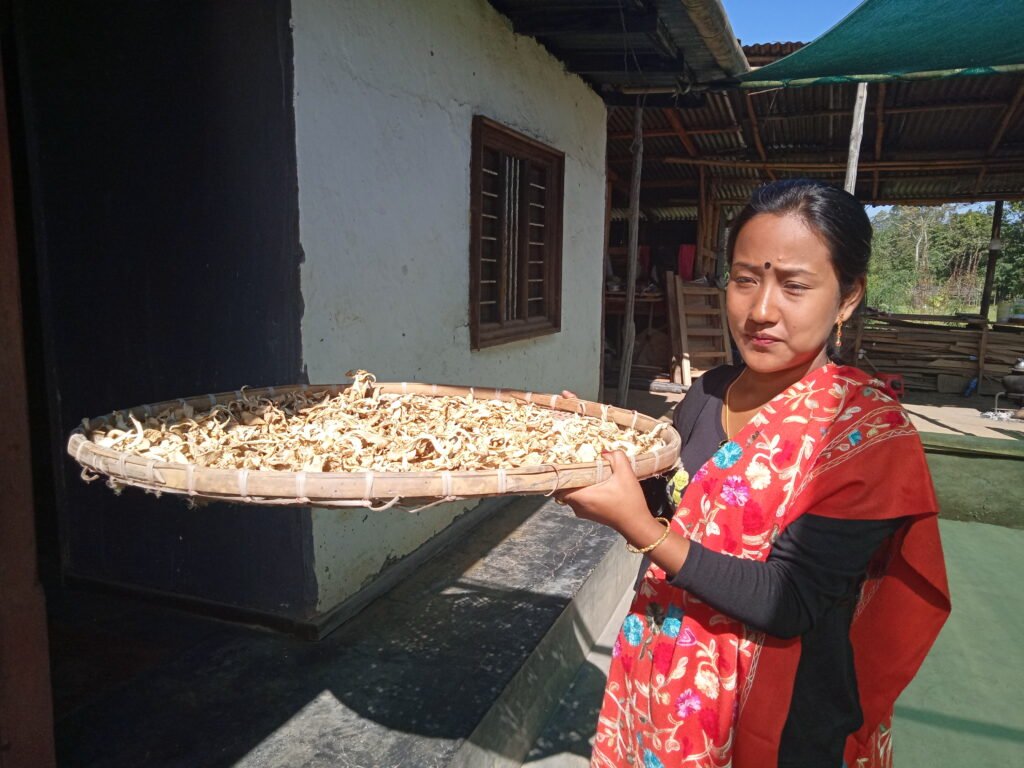Drying is one of the oldest methods of food preservation. We can dry foods naturally which are high in fibre, Carbohydrates and low in fat. Such a method keeps the food at the best nutritional value, making them healthy food choices.
Drying preserves foods by removing enough moisture from food to prevent decay and spoilage. Dried foods are tasty, nutritious, lightweight, easy to prepare, and easy to store for use.
The energy input is less than what is needed to freeze or canned. And the storage space is minimal compared with that needed for canning jars and freezer containers.
The nutritional value of food is only minimally affected by drying. Vitamin A is retained during drying. Yellow and dark green vegetables such as peppers, carrots, winter squash, and sweet potatoes have high Vitamin A.
Vitamin C is destroyed by exposure to heat, although pre-treating foods with lemon, orange or pineapple juice increase Vitamin C content.
When drying food, it is necessary to remove moisture as quickly as possible at a temperature that does not seriously affect the flavor, texture and color of the food.
If the temperature is too low in the beginning, micro organisms may survive and even grow before the food is adequately dried.
Again, if the temperature is too high and the humidity too low the food may harden on the surface. This makes it more difficult for moisture to escape and the food does not dry properly.
Drying, like all methods of preservation, can also results in loss of some nutrients. For best retention of nutrients in dried food, it is advisable to store in a cool, dark, dry place and use within a year.
How to select vegetables for drying
There is always a perfect time to select vegetables for drying. To dry foods naturally, select vegetables at peak flavor and eating quality. This usually is just as they reach maturity.
Sweet corn and green peas, however, should be slightly immature. This is to retain their sweet flavor before their sugars change to starch.
Thoroughly wash or clean vegetables to remove any dirt or spray. After draining, sort and discard any food with decay, bruises or mold. Such defects may affect all our foods which are being dried.
Food should be dry enough to prevent microbial growth and subsequent spoilage. Dried vegetables should be hard and brittle.
We should remove a small handful of food and cool for a few minutes before testing for dryness. When warm or hot, foods seem more soft, moist and pliable than they actually are.
When drying is complete, some pieces will be moisture than others due to size and locations during drying process. Conditioning distributes residual moisture evenly in dried foods naturally and minimizes the chance of spoilage and defects.
To protect dry foods naturally from insects and re-absorption of moisture, seal lids of the containers. Wrap the edge where the lid meets the container with plasticized, pressure sensitive tape or a cloth strop dipped in melted paraffin.
Naturally dried foods are costly and high in demand in the market. A farmer earns more money from her fresh mushroom by drying. Dried oyster mushroom are priced at Rs 800 to 1000 per kg in India. The same mushroom when sold fresh is just Rs 150-200 per kg only.
(C) Naorem Mohen
The Writer can be reached at Twitter @laimacha
Naorem Mohen is a natural farmer, full-time blogger, and entrepreneur dedicated to promoting Manipur’s black rice Chakhao, local beverages, and edible mushrooms.

